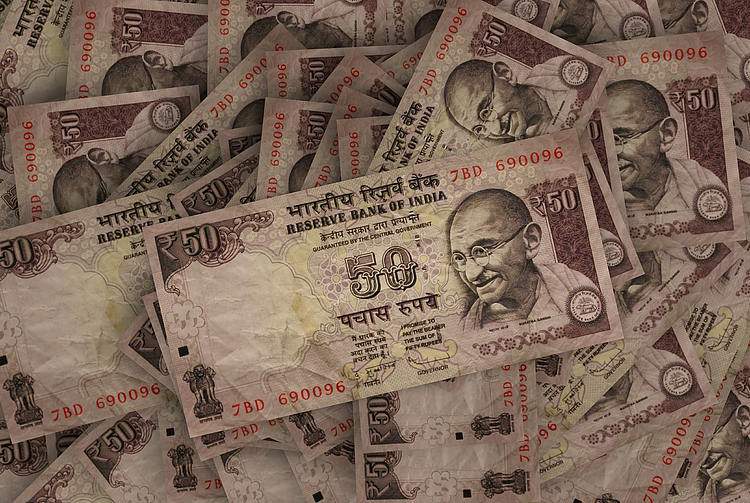Share:
The Indian Rupee is falling amidst the recovery in the USD. Analysts are predicting that Q2 Indian GDP will grow faster than the RBI’s expectation of 6.5%. Investors are keeping an eye on the US S&P Global PMI before India’s quarterly growth numbers next week. The Indian Rupee (INR) lost ground on Friday as the US Dollar (USD) attracted some buyers during the session.
India is currently showing resilience in the midst of the global downturn due to its reliance on local demand. Analysts are projecting Q2 Indian GDP from the Central Statistical Office to grow faster than the 6.5% expected by the RBI. Additionally, oil prices need to be closely monitored as OPEC+ will hold their next meeting on November 30 to discuss oil supply cuts. India is particularly vulnerable to higher crude prices as it is the world’s third-biggest oil consumer.
The US market was closed on Thursday for Thanksgiving, and the trading session on Friday was shortened. Market players are keeping an eye on the US S&P Global PMI data for fresh impetus.
According to a Reuters poll of equity strategists, the Indian stock market is set to hit new highs in the next six months and rise over 10% by end-2024. The RBI Governor Shaktikanta Das estimated a 6.5% growth in India’s real GDP in fiscal years 2023-24 and 2024-25. RBI’s Das said the Indian Rupee has shown moderate volatility and orderly movements as compared to its peers despite elevated US Treasury yields and a strong USD. RBI’s Das emphasized that India is vulnerable to food-price shocks from extreme weather events and global factors. India’s Ministry of Finance said in a report that the government and the RBI will closely monitor inflationary risks. RBI projected that average inflation will drop from 6.7% in the previous fiscal year to 5.4% in 2023-24. The US S&P Global Manufacturing PMI is estimated to drop from 50.0 to 49.8 and Services PMI is expected to fall from 50.6 to 50.4. The US Jobless Claims, Durable Goods Orders, and Consumer Sentiment suggested the economy is easing but remains strong enough to avoid recession. Market players believe the Federal Reserve (Fed) may be done raising interest rates and the economy is still resilient.
The Indian Rupee maintains its positive outlook, although it traded weaker on the day. The USD/INR pair broke above the trading range of 82.80–83.35 since September. According to the daily chart, the technical outlook suggests that the bullish bias stays intact as the pair holds above the key 100-day Exponential Moving Average (EMA) with an upward slope. Furthermore, the 14-day Relative Strength Index (RSI) holds above the 50.0 midline, reflecting that further upside looks favorable.
The Indian economy has averaged a growth rate of 6.13% between 2006 and 2023, making it one of the fastest-growing in the world. India’s high growth has attracted a lot of foreign investment. The greater the level of investment, the higher the demand for the Rupee (INR). Fluctuations in Dollar-demand from Indian importers also impact INR. India has to import a great deal of its oil and gasoline so the price of oil can have a direct impact on the Rupee. Oil is mostly traded in US Dollars (USD) on international markets. If the price of oil rises, aggregate demand for USD increases, and Indian importers have to sell more Rupees to meet that demand, which is depreciative for the Rupee. Inflation has a complex effect on the Rupee. Ultimately, it indicates an increase in money supply which reduces the Rupee’s value. Yet if it rises above the Reserve Bank of India’s (RBI) 4% target, the RBI will raise interest rates to bring it down by reducing credit. Higher interest rates, especially real rates, strengthen the Rupee. They make India a more profitable place for international investors to park their money. A fall in inflation can be supportive of the Rupee. At the same time, lower interest rates can have a depreciatory effect on the Rupee. India has run a trade deficit for most of its recent history, indicating its imports outweigh its exports. Since the majority of international trade takes place in US Dollars, there are times, due to seasonal demand or order glut, where the high volume of imports leads to significant US Dollar-demand. During these periods, the Rupee can weaken as it is heavily sold to meet the demand for Dollars. When markets experience increased volatility, the demand for US Dollars can also shoot up with a similarly negative effect on the Rupee.
